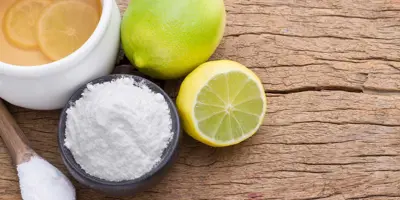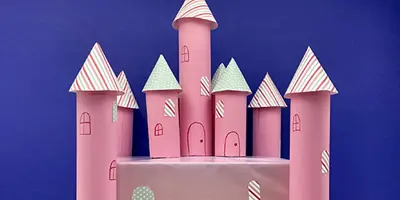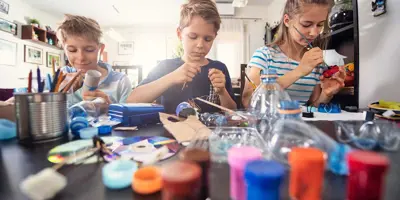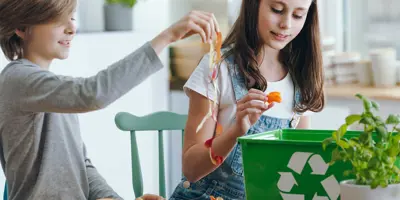1 person found this helpful

Another day, another breakfast yoghurt pot diligently rinsed and left teetering atop the ever-growing tower of rinsed recyclables, next to a full recycling bin. So close, and yet... Hey! At least the intention’s there, right? Now, once those rinsed plastics do finally make it into the recycling bin, what happens next? Do you know? How is plastic recycled after you’ve done your bit? We’ll start by explaining why it’s important to recycle plastic wrappings, bottles, containers and other plastic packaging, before diving into the following steps for plastic packaging recycling:
- Recycling is collected.
- Then, it’s sorted by material.
- Plastics are then washed.
- And resized.
- Different types of plastic are identified and then separated.
- Finally, plastics are compounded.
Why is plastic packaging recycling important?
Before learning all about how much plastic is actually recycled, it’s important to understand why plastic packaging and wrap recycling is necessary in the first place. Recycling is fairly well ingrained into our routines. Once it’s been part of our lives for so long, not recycling can feel sort of... weird. We all know it’s important, but not many of us may not why.
Recycling plastic means that it can be reprocessed into a new material, keeping it useful and out of our natural environment, where plastic can cause damage. It also reduces the need for new plastic production, which saves energy and carbon emissions too.1 Great! So, how do we sort our plastic packaging for recycling?
When throwing away plastic, first consider if you can reuse or repurpose it for something else – can you fill up an empty bottle instead of buying a new one? Or what about Saturday night’s takeaway box? If your cupboards are already overflowing with Tupperware – we see you, last week’s leftovers rotting away in the box at the back of the fridge – then recycling is the best option,1 as it offers the chance for the plastic to be given another life instead of ending up in landfill, where it can last for 500 years!2
So, how much plastic is recycled into new items?
So, we know why recycling plastic packaging, bottles and wraps is important. But how much plastic is recycled into these new items, and how much is left to landfill? How much plastic is recycled each year varies from country to country. In the UK, a reported 49% of plastic packaging is recycled, and 37% of all plastic is recycled.3
While the statistics are telling, it’s also worth considering these three factors to determine how much plastic is recycled:
- Companies making recyclable products.
- Recycling depots having the machines to do it.
- Consumers putting their plastic in the correct recycling bins/boxes/collection points.
How to recycle plastic bags, bottles and packaging
It’s simple, really! To recycle plastic wrappings, bottles and more, simply dispose of the item in your recycling bin – but be sure to check your council's guidance to ensure you comply with local regulations.
Plastic packaging recycling: How is the plastic recycled?
Want to know how to recycle a plastic bag? What about plastic toilet roll wrapping or freezer bags? In the UK, most plastic bags are made from flexible polyethylene (PE) film, which is not collected with other recyclables from your home.4 However, many supermarkets provide plastic bag collection points, so check in with your local council where to deposit your PE plastic wrap recycling and they’ll take it from there!
Other recyclable plastic packaging – like milk cartons, shampoo bottles and clear plastic trays – can be sorted for recycling at home. So, once your recycled plastic packaging hits the bottom of the correct recycling bin, what happens next? Where does it go? To answer this question, we’ll run through the step-by-step journey of how this plastic is recycled in the UK, from your home to its new life as a recycled product.
Step 1: Recyclables are collected
Your empty yoghurt pot tower just started its journey to a new life! After you've rinsed and disposed of your plastic packaging, recycling collection is the first – and obvious – step. This most likely happens for you when the recycling trucks pick up the contents of your recycling bins and boxes from outside your home, and take it all to the local recycling facility. The level of collection schemes varies from country to country in Europe.
Step 2: Recyclables are sorted
Many recycling companies in the UK have a Single Stream Recycling System, collecting all materials in one batch. So, this second stage of plastic packaging recycling sees different materials (plastic, paper, glass, metal etc.) separated from each other, either by a machine, or manually.5 Different plastics are sorted by type of material/colour/manufacturing method and certain features can facilitate the process – for example, if packaging has less print and where the packaging material is easy to identify.
Step 3: Plastics are washed
But how can plastic packaging be recycled when it’s covered in other things? That’s where industrial washing comes in. It helps to remove anything that isn’t plastic – such as food or drink residue, or adhesives and labels. These impurities need to be removed (always try to remove them as best you can before putting them in your recycling bin!), as they can adversely affect the structural integrity of the product it’s turned into, as well as contaminate other recyclables.6
Step 4: Plastics are resized
Plastic is easier to reshape once it’s been resized, and this happens by granulating or shredding it,5 to create smaller pieces. Magnets and detectors can help identify any metal that has accidentally ended up here.
Step 5: Plastics are identified and separated
How can plastic packaging be recycled when there are different types? Those small particles are further sorted, after being tested to identify various qualities:5
- Density. By seeing if they float or sink in a tank of water.
- Air classification (thickness). By seeing which fly high and which stay low in a wind tunnel.
- Melting point and colour. Determined by analysing samples.
So, after all that, how much plastic is recycled? Certain types aren’t as easy to recycle, and each facility will only have equipment to process specific types. That doesn’t necessarily mean those other types end up in landfill. They might be sent to another recycling depot. So, when it comes to how much plastic is recycled after it’s been resized and separated, it depends on local facilities and processes.
Step 6: Plastics are compounded
We’re now onto answering the question: how is plastic recycled into new things? After the plastic is dried, it’s then compounded – this mean the particles are melted and made into pellets that are used in new products.
Often, plastic is recycled into new packaging – so look out for those ‘recycled plastic’ labels when you’re shopping to reduce your carbon footprint! Plastic can also be recycled into bags, clothes, shoes, furniture, even car parts and building construction materials.3
Now you know the answers to, “how is plastic recycled?” and “how much plastic is recycled each year?” You also know how to sort your plastic packaging recycling – and you've learnt where and how to recycle plastic bags and wraps, so you can sort them correctly.
So, how do we facilitate plastic packaging recycling at Plenty?
At Plenty, we’re passionate about helping to increase the amount of packaging that is recycled. With the right facilities and collection schemes, our packaging is already technically recyclable as the majority of plastics in our packaging are made of polyethylene or polypropylene – the optimal recyclable plastic material. With sustainable and circular innovations in our packaging, we’re working towards 100% recyclability by 2025.
And that’s not all. While our packaging is both recyclable and made with recycled plastic, we’re innovating with the kitchen roll sheets themselves. The majority of our kitchen paper is already from certified sources such as FSC® (FSC-C003255), and now Plenty Original is certified compostable.* That means whenever you’re done wiping up your compostable mess – and without using chemical cleaners – you can dispose of your sheet in the compost heap, where it will transform into nutrient rich fertiliser for your soil.
For more information on Plenty being compostable, check out the answers to your questions here.
With companies playing their part, we can all make a big difference. As far as how much plastic is recycled, really? That’s partly down to those of us who buy plastic products. By checking the local guidelines about which plastics can be recycled in depots, we can all place the correct products in our recycling bins to work towards a sustainable future – one recycled yoghurt pot at a time.
*Plenty kitchen towels are certified as home and industrially compostable according to NF T 50-800 and EN14995.
Sources:
1 Is recycling plastics worth it? Recycle Now
2 The lifecycle of plastics, WWF
3 Recycling Plastic Packaging, British Plastics Federation
4 Plastic Film – A to Z of Recycling, Warwickshire County Council
5 How is plastic recycled? Recycle Now
6 Waste and recycling myths busted, Derbyshire County Council
Related articles
Clean and green! 10 tips for eco-friendly cleaning
From baking soda and lemon cleaning methods to a surprising kitchen cupboard treatment for mould, read our sustainable cleaning products ideas for your home!

7 steps to create a DIY cardboard castle at home
Learn how to make a cardboard castle to fit their favourite interests. Find step-by-step cardboard castle DIY instructions and theme ideas here.

Reducing waste at home: The easy way
Find out how to save energy at home and reduce food waste with our top tips. Read on for handy pointers for making your household more eco-friendly.

6 tips on how to save water at home
Learn how to save water at home. Find five easy ways to conserve water, so you can bring down your waste and make some clever savings in the process, here.

What does biodegradable mean and what is non-biodegradable?
Biodegradable and non-biodegradable? What do they mean?! Don’t fret, discover the definitions and biodegradable materials to become an eco-friendly pro!

How to lead a sustainable lifestyle in 5 key ways
Learn how to live more sustainably with our tips on diet, methods of transport, energy consumption and product choices. Find sustainable living examples here.

